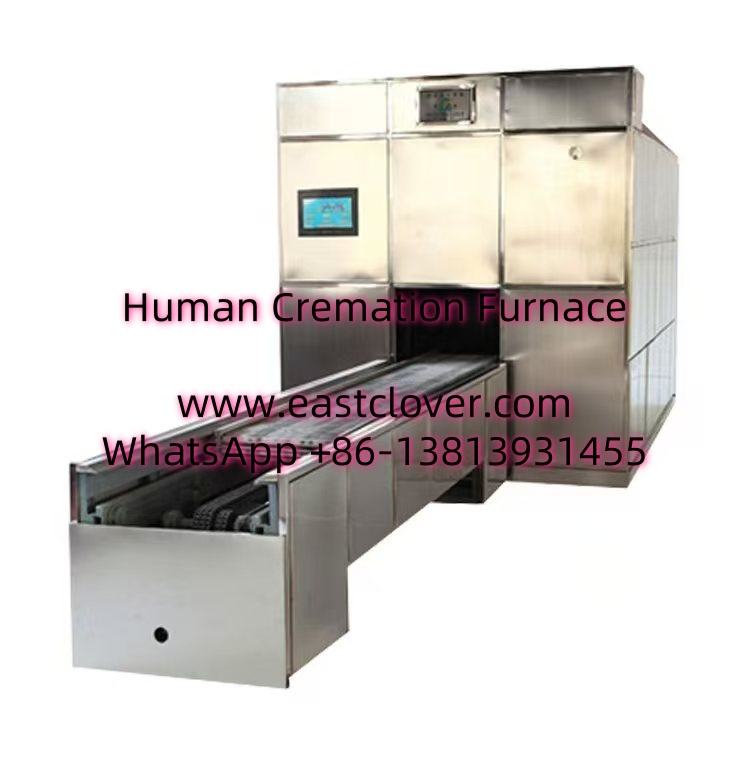Introduction
In the aftermath of large-scale disasters—whether natural, industrial, or conflict-related—managing deceased individuals with dignity and efficiency is a critical yet often overlooked challenge. Traditional mortuary infrastructure may be overwhelmed or destroyed, leading to public health risks and psychological trauma for survivors. Containerized mobile cremation furnaces have emerged as a transformative solution, offering rapid deployment, scalability, and environmental compliance to address these urgent needs.
Key Features of Containerized Mobile Cremation Furnaces
Mobility and Modular Design
Built within ISO-standard shipping containers, these units can be transported via trucks, ships, or aircraft. Their modularity allows for easy integration with additional units, such as cold storage or administrative modules.
Rapid Deployment
Pre-configured systems enable setup within hours, even in remote or damaged areas. Automated ignition and temperature controls minimize reliance on skilled operators.
High Throughput Capacity
Advanced models process 10–20 bodies daily, surpassing temporary burial pits or overloaded local crematoriums. Dual-chamber designs allow simultaneous operation.
Environmental Compliance
Equipped with scrubbers, filters, and afterburners, these furnaces reduce particulate matter and harmful emissions, aligning with international air quality standards.
Energy Efficiency
Some units use hybrid power systems (solar, biodiesel, or LPG) to ensure functionality in areas with unreliable electricity.
Benefits in Disaster Response
- Dignity in Crisis: Provides respectful handling of remains, critical for community healing.
- Public Health Protection: Mitigates disease spread from decomposing bodies contaminating water or soil.
- Operational Flexibility: Deployable to disaster zones, refugee camps, or pandemic hotspots.
- Cost-Effectiveness: Reduces long-term costs associated with temporary morgues or mass graves.
Use Cases and Real-World Applications
Natural Disasters
Following the 2015 Nepal earthquake, mobile units supplemented overwhelmed cremation sites along the Bagmati River, addressing both capacity and environmental concerns.
Pandemics
During the COVID-19 pandemic, cities like New Delhi deployed mobile crematoriums to manage the surge in fatalities, reducing strain on existing facilities.
Conflict Zones
In Ukraine, mobile units have been used to process remains in areas where traditional methods were unsafe or inaccessible due to ongoing hostilities.
Integration with Modern Mortuary Management
These systems are often paired with:
- Cold storage modules to preserve remains before cremation
- Digital tracking systems (RFID tags, GPS) for accurate record-keeping
- Data management platforms to streamline documentation for legal and administrative purposes
Challenges and Considerations
- Cultural Sensitivity: In regions where burial is preferred, alternative solutions may be required.
- Regulatory Compliance: Emission standards and permits vary by country, necessitating pre-approved designs.
- Training Requirements: Operators need training in both technical and ethical protocols for handling remains.
www.southclover.com
Containerized mobile cremation furnaces represent a paradigm shift in disaster response, combining humanitarian values with cutting-edge engineering. By addressing logistical, environmental, and cultural challenges, these systems ensure communities can navigate crises with resilience and respect. As climate change and global urbanization intensify disaster risks, investing in such adaptable technologies will be crucial for sustainable emergency preparedness.
Frequently Asked Questions (FAQs)
How quickly can a mobile cremation unit become operational?
Most units can be functional within 4–6 hours of arrival, depending on site preparation and power source setup.
Are these units environmentally safe?
Yes, advanced emission control systems reduce pollutants to levels compliant with WHO and EPA guidelines.
Can they operate without grid electricity?
Many models include hybrid power options, such as solar panels or biodiesel generators, for off-grid use.
How are cultural preferences addressed?
Response teams collaborate with local leaders to adapt operations, such as allowing family members to witness ceremonies or preserving ashes for later rituals.
What is the average cost per unit?
Prices range from $150,000 to $500,000, varying with capacity, emission controls, and customization.
How do they compare to traditional crematoriums?
While less permanent, mobile units offer unmatched flexibility and speed, making them ideal for temporary surges in demand.

Comments are closed